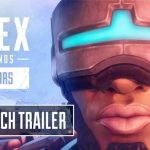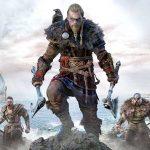What is Web3?
Web3 is an idea for a new iteration of the World Wide Web which incorporates concepts such as decentralization, blockchain technologies, and token-based economics. Some technologists and journalists have contrasted it with Web 2.0, wherein they say data and content are centralized in a small group of companies sometimes referred to as “Big Tech”.
The term “Web3” was coined in 2014 by Ethereum co-founder Gavin Wood, and the idea gained interest in 2021 from cryptocurrency enthusiasts, large technology companies, and venture capital firms.
What is Web3 Gaming?
The gaming space has always sat on the cutting edge of technology. And now, as we move into a new era of innovation, the term Web3 gaming keeps appearing. But what is Web3 gaming, and what opportunities can it afford gamers and the ever-growing industry?
Web3 gaming is the current gaming sector looking towards emerging technologies to remain on that cutting edge. But instead of simply using more powerful hardware or upgrading graphics, Web3 gaming is looking to use things like the Metaverse, NFTs and blockchain technology.
Using these new and emerging technologies is not simply advancing the gaming space but entirely revolutionising it. Blockchain has the potential to bring gaming into the Web3 space and offer opportunities and benefits to gamers and players that were previously inconceivable.
The basis of blockchain technology lends itself well to a new era of gaming, with components such as decentralisation, security, tokenisation and ownership all able to play a big role in changing gaming as we know it.
Integrating NFTs and the digital ownership that can be brought to gaming has huge implications for gamers who value their in-game items. However, it also can provide the gaming industry with a new revenue stream.
GameFi, P2E & Gaming Economies also come into play with blockchain-enabled Web3 gaming. This new dynamic fits in with what gamers want but also is a huge boon for game creators and developers.
Finally, decentralised platforms and gaming DAOs are being explored all the time. These mechanisms put the power back into the hands of the gamers and allow for much greater control and ownership over the games that people love.
Because Web3 gaming is a revolution and one that is predicated on the blockchain, there are ample opportunities that are still to emerge. Foundations are being laid, but the future of Web3 gaming is still being built and felt out.
Also read :
Different types of Web3 games
To make players experience different gameplay, all Web3 games can be divided into two major categories, namely play-to-earn and walk-to-earn games. And it is the perfect time to deepen your knowledge about this type of gaming and its diversification.
Play-to-earn
It is evident from the name of this type that the essential concept of play-to-earn games is to play and earn. Your reward can be NFTs as well as cryptocurrencies, and the only thing required is to play in this Web3 dApps. The truth is simple – the more you play, the more digital assets you will get. In general, you play in a game, completing different tasks or challenging in a variety of competitions, as digital assets play a role in your reward for your progress and accomplishments. Consequently, this reward can be used to unlock further rewards (as an investment for further gameplay) or sold on digital marketplaces.
Unlike traditional gaming, the central part of play-to-earn games is decentralized, meaning that there is no total control from the side of the game’s developer. And players who participate in the in-game economy create value for both players and developers.
The most prominent representatives of play-to-earn games are:
-
AXIE INFINITY
-
Splinterlands
-
Alien Worlds
If you want to try one of these games and earn digital assets, make your first step and buy some crypto tokens to start playing.
Also read :
The Rise of Play-to-Earn Games: What Drives The Axie Infinity Craze?
Walk-to-earn
One more type of GameFi is walk-to-earn games. The primary concept of these games is based on the obvious principle – instead of playing the games, you move (walk) while earning digital assets. It is one more innovative approach to reward players for just a simple action – walking.
So many companies provide their players with games based on that principle, but it is worth indicating two companies that stand out from the crowd – Walken and STEPN.
STEPN is the world’s first lifestyle application that is designed with the simple purpose of rewarding players for working out. As a reward, users receive GST tokens for different kinds of activities: running, jugging, and walking. These tokens can be used for in-app purchases and traded on various exchange services.
Walken is a Web3-based walking application that ties three essential things: sports activity, online gaming, and crypto. To simplify, Walken intends to reward (gifting crypto) its users for walking. The reward is represented by WLKN (an in-app token) that can be consequently sold on exchange services. Compared to STEPN, Walken has achieved more. While applying the walk-to-earn principle, it has successfully added exciting gameplay where you need to level up your character and participate in different competitions against other players.
Bear in mind that some walk-to-earn games cannot be played without a crypto purchase beforehand, so it is the reliable way to get your crypto.
Metaverse worlds
Metaverse worlds are immersive virtual spaces often constructed from user-generated content. Many metaverse worlds contain game-like gatherings or elements of gamification to incentivize collaboration and socialization. The Sandbox is a popular open-world platform where players can buy land and build games.
Also read :
What is Metaverse Cryptocurrency? Which is Best Metaverse Crypto?
Fantasy sports
Riffing off of traditional fantasy sports leagues, platforms like Sorare allow users to collect digital player cards, build lineups and earn points based on players’ real-life performances. Hellebore, as another example, allows users to buy NFTs and predict the outcomes of games across professional sporting leagues.
AXIE INFINITY
Axie Infinity is a non-fungible token-based online video game developed by Vietnamese studio Sky Mavis, known for its in-game economy which uses Ethereum-based cryptocurrencies. It has been called ‘a pyramid scheme that relies on cheap labor from countries like the Philippines to fuel its growth.’
Players of Axie Infinity collect and mint NFTs which represent axolotl-inspired digital pets known as Axies. These creatures can be bred and battled with each other within the game. Sky Mavis charges a 4.25% fee to players when they trade Axies on its marketplace.
The gameplay is more or less like the Pokemon games. You have to catch creatures named ‘Axies’, train them, and fight other players. We can convert the rewards that we earn from the game into real crypto assets. As Axie infinity has breedable creatures, you can compare it to CryptoKitties.
How to Play Axie Infinity?
If you have not played crypto games before, you might find it difficult to get started. So we decided to make things easier for you. Here’s a quick rundown on how to start playing Axie Infinity:
How to get started
- Install the game through their official website. As of now, Axie Infinity is playable on PCs and smartphones.
- Next, you will need a Metamask account and a good crypto wallet. In case you are not sure, you can check out our guide on ‘ best crypto wallet for gaming’. And of course, you will have to fund your wallet.
- Now, it’s time to buy some digital pets. Visit the Axie Infinity marketplace to get your Axies. Note that you need three Axies to start playing,
- Make sure you spend some time researching the best Axies to buy. You will be playing with these Axies for a while before you can get other beasts.
Each Axie comes with different characteristics
- A class (beast, aquatic, plant, bug, bird, reptile, mech, dawn, dusk)
- Battle Stats (health, speed, skill, morale)
Six Body parts - Four abilities
- A rarity attribute (eg. mystic, japanese)
- A purity level (from 0 to 6 and from 0 to 100%)
- Breed Count (from 0 to 7)
Each battle is a 3vs3, and the minimum you need to play the game is one team. Three axies equal to 12 abilities in total, 4 each.
Fights can happen in PvE (adventure mode) or PvP (arena mode). PvE is a multi-phase linear battling system, while PvP is a turn-based battler.
SPLINTERLANDS
Splinterlands is a decentralized collectible card game built on blockchain technology. It is similar in concept to games like Magic the Gathering and Hearthstone where you build up a collection of cards, which all have various different stats and abilities, and use them to battle other players in skill-based matches. By using blockchain technology, players can own their digital cards, and can trade and sell them freely just as if they were physical cards, without the control of any centralized company or entity.
Splinterlands is a multiplayer digital-collectible trading card game on the Hive blockchain. The game is a strategic auto-battler, where players must put together the most optimal 7-card deck to fight against their opponents in each round.
Each round will begin with its own set of rules upon which the player must create their deck. It’s reminiscent of games such as Hearthstone, Legends of Runeterra, Yu-Gi-Oh and Magic the Gathering Arena.
Cards in Splinterlands are player-owned non-fungible tokens. Players can use their NFTs to battle for prizes, collect them as collectibles, trade them on the peer-to-peer market, combine them to level up, or even burn them to get Dark Energy Crystals, Splinterlands’ official in-game cryptocurrency.
Splinterlands follows a play-to-earn model with players winning rewards in the ‘Ranked mode’ by competing against each other in a league-based system. To progress up the league, players must secure wins and earn rank points. The higher the league, the better rewards players can earn through winning matches.
Splinterlands is free-to-try but not free-to-play. Players cannot earn rewards or buy card packs to competitively climb ranks without purchasing the ‘Summoner’s Spellbook’ (more on that later). However, the game does allow players to play a few matches and try it for free before deciding to invest in the game.
Also read :
ALIEN WORLDS
Alien Worlds is a play to earn game built on the WAX blockchain. It features a universe of six worlds, each with 500 land plots. Every plot is player owned and represented by an NFT. Players can earn Trilium in-game, transfer it to Binance Smart Chain, and earn more Trilium through a staking system. In this game guide we’ll provide some details about the game, a general overview of its features, and explain how to get started exploring the Alien Worlds metaverse!
- Alien Worlds is an NFT Metaverse where you can play with unique digital items (NFTs).
- Staking: Players stake Trilium to planets to vote in the upcoming Planetary elections, as well as to increase the Planet’s reward pool.
- Planet DAOs: Participate in weekly elections for council candidates, submit proposals on how to distribute the planetary treasury or run for planetary council yourself.
- Trade Game Cards: Players may select NFT game cards for their strategy on Binance Smart Chain (BSC) and WAX, to be used for mining, fighting and missions.
- Cross-chain bridge: Teleporting TLM between BSC, WAX, and Ethereum.
Also read :
Why are Game Companies giving up on NFTs? What’s Happening With NFTs in Games?
Top 10 Alchemy Web3 Games
The most popular web3 ecosystems with Alchemy’s Dapp Store.
Planet IX
Planet IX is an NFT-based strategy game, and your goal is to restore a fallen planet to its former green-blue glory while uncovering its mysteries. The story is continuously expanding into a huge and immersive sci-fi metaverse, and the narrative is tailored towards bringing awareness of humanity’s impact on the world of today.
Aurory
Launched in 2022, Aurory is a free blockchain-based tactical Japanese role-playing game built on Solana. It follows the play-to-earn model where users can compete with other players using creatures called ‘Nefties,’ each of which is a non-fungible token (NFT).
DeFi Land
Backed by investors like the Solana Foundation and FTX, DeFi Land is a blockchain-based version of Facebook’s agriculture-simulation game Farmville. It follows the play-to-earn model, allowing users to earn the native token DFL for completing tasks and reaching milestones.
Zed Run
Founded in 2018 by Australian studio Virtually Human, Zed Run is a digital horseracing platform hosting several race events every hour. Because the game runs on the Polygon network and uses the native Zed Run Wallet, there are minimal gas fees.
STEPN
STEPN, the world’s first move-to-earn game, was launched in late 2021 by FindSatoshi Lab. Running on Ethereum’s biggest competitor Solana, STEPN has low gas fees and carbon footprint.
Faraland
Faraland is a popular play-to-earn fantasy RPG built on the Binance Smart Chain. Originally founded by Moon Knight Labs in September 2020, Faraday is a turn-based game where players can earn crypto rewards by winning battles against other players in a PvP environment.
Alien Worlds
Alien Worlds is an interstellar metaverse adventure, wherein players can embark on dangerous missions to earn valuable in-game resources and harvest the game’s native token.
Aavegotchi
Aavegotchi is a blockchain game where players can enter the Gotchiverse and collect Aavegotchi NFTs. The game incorporates many aspects of decentralized finance, such as staking and lending cryptocurrency.
Splinterlands
Splinterlands is a digital trading card game built on the Hive blockchain. When playing Splinterlands, gamers compete in strategic matches using their collectible cards.
DeFi Kingdoms
Defi Kingdoms is a gamified experience in decentralized finance originally built on the Harmony blockchain. In Defi Kingdoms, players explore a pixelized world and go on in-game quests to receive rare items and resources.
CryptoKitties
CryptoKitties is the first decentralized open-source game in the world that popularized NFTs, developed on the Ethereum blockchain by Dapper Labs in 2017.
Crabada
Launched in November 2021, Crabada is the most popular play-to-earn game running on Avalanche. In the past, the game attracted an average of 8.5K users a day and was responsible for over 64% of transactions on the blockchain at its peak.
Decentraland
Decentraland is a decentralized metaverse built on Ethereum, where users can explore, create, experience, and monetize their own content and applications. The virtual world is finite, and the available 3D space is called LAND, which is divided into parcels and represented by non-fungible tokens (NFTs).
Funfair
Established in 2017, FunFair is a blockchain-focused firm that aims to revolutionize the online gambling industry. FunFair games players earn winnings in the platform’s native token FUN, which is also used for placing bets.
Best Play-to-Earn Web3 Games
Mist
Mist is a blockchain-based MMORPG that boasts an open fantasy world and fantastic narratives. From character development to environment design, control to gameplay, it aims to create a new height for Web3 video gaming. For gamers seeking an ultimate sense of control, you can also play this game with a console controller.
Helix
Helix is building a virtual replica of New York City where players can role-play, compete for rewards, socialize and own virtual properties. So if you like GTA, this game is for you. But it will only bring more unexpected experiences with NFT rewards, Battle Royale mode, gun battles, and more.
Domi Online
Domi Online is an MMORPG that empowers gamers through NFTs and play-and-win mechanics. It aims to create an experience for players to enjoy the classic elements of an MMORPG, such as combat, leveling, and skill systems, while having them immersed in modern-day visuals and interface.
Illuvium
Illuvium is a decentralized RPG and collection game on The Immutable X L2 network. The story of Illuvium is set in the aftermath of a spaceship crash on an alien world. To survive, players must explore this unknown territory, capture creatures, and uncover obelisks that help them battle through the map.
Big Time
Big Time is a free-to-play, multiplayer action RPG mixes fast-action combat into adventures. It allows players to explore ancient mysteries and futuristic civilizations. Environments and Adventure Instances in Big Time are limitless with infinite playability. So players can spend as much time as they want exploring each area, and those fields are filled with things to do.
Treeverse
Treeverse is a mobile-friendly MMORPG with social features and an emphasis on cooperative gameplay. Players start their journey in the city of Elderwall and engage in various exciting gameplay, including quests, explorations, forging unique items, and more.
My Pet Hooligan
Last year, My Pet Hooligan set out as an NFT collection of 8888 unique 3D characters. These NFTs have now become playable 3D avatars in a PvP and social metaverse, The Rabbit Hole. The Rabbit Hole received several nominations at the Web3 GAM3 Awards, including Best casual game, Best adventure game, Best multiplayer game, and Best graphics.
Life Beyond
Life Beyond is a socio-tech universe. In this fascinating alien world, players can live the life they have always dreamed about. You can be whoever you want to be and immerse yourself in a modern massively multiplayer role-playing game with endless social and creative possibilities.
What are the key features of Web3 gaming?
Web gaming is a value-exchange gaming model where people can own and trade in-game objects and collectibles in the form of unique NFTs using cryptocurrencies. Web Gaming offers self-sovereignty and decentralization in gaming and is open source. There are some fundamental features of Web3 gaming platforms:
Ownership and interoperability
Web3 gaming offers self-sovereignty where players can completely own in-game assets and collectibles as digital NFTs. In traditional gaming, players own in-game assets and collectibles, but they lose all of their assets once they decide to change the gaming platform. Web3 gaming solves this problem by providing true ownership and interoperability between various platforms. The players can own in-game assets on one platform and carry them over to their next gaming platform.
Old game integration
Web3 gaming has another interesting feature of integrating and upgrading older game models into metaverse and blockchain platforms, making them decentralized in nature. The gaming process is personal, and every player has their preferred game. Web3 offers to upgrade old and popular games by extending them to the metaverse, where players can make their avatars and trade in their favorite in-game assets and collectibles.
Player-driven gaming
Web3 gaming tailors the gaming ecosystem based on players’ liking. There are different ways in which Web3 gaming benefits players. One is the play-to-earn aspect, where they earn profit via their in-game items; another is old-game integration which takes care of players’ wish to play their favorite games on the metaverse. Another aspect of player-driven gaming is that Web3 gaming supports self-sovereignty, which is again for players’ benefit.
Negligible Downtime
Web3 gaming ecosystems run autonomously with minimal maintenance cost and zero intervention from any authority. With block minting and high game data storage facility, Web3 gaming has negligible downtime and is highly scalable.
Transparent gaming
Web3 gaming is a distributed process where games are hosted on the blockchain, making them unhackable. With no single point of failure, blockchain-based gaming relies on voting consensus to modify the gaming process and is equally accessible to all the players engaged on the network. This way, Web3 gaming ensures a high level of transparency.
Now that we have understood the features of Web3 gaming, let us take a look at its technology stack in the next section.
Also read :
What is the Best NFT Marketplace? Can you Make Money with NFT?
What to Expect From Web3 Gaming in 2023
The last two years in web3 have been loud — the roaring bull market in 2021 and the cacophony of bad news rattling through 2022.
Entering 2023, we believe a few final aftershocks of the FTX collapse will reverberate through the market but that the damage is largely done. Over the last year, the crypto market has massively delevered, bad actors have been exposed, and weak companies have failed.
Despite the market turmoil, builders have continued to build and the development of web3 infrastructure and applications has continued to accelerate. Institutions are continuing to adopt web3 technologies at an accelerating pace, and this adoption is increasingly broadening to all types of institutions — including financial institutions, consumer brands, gaming companies, and social platforms.
While 2021 and 2022 were loud, we believe 2023 will be relatively quiet on the surface as web3 falls out of the daily headlines. In this quiet, the great deployment cycle of web3 technology will accelerate. At the application layer, we expect to see the most striking adoption of web3 in stablecoin-enabled global payments, established brands offering digital goods, and gaming companies more deeply embracing web3.
NFTs as new revenue streams for gamers
Blockchain games often offer in-game assets as NFTs that players can earn or purchase.
NFTs are cryptographic tokens that allow players to verify ownership of a particular item. For gamers, that could mean in-game skins, rare collectibles or access passes to exclusive content or future releases – concepts gamers are already familiar with. With Web3, they are made more secure on a blockchain.
“The easiest way to explain to a gamer the value that they’re getting with any sort of blockchain technology is that these are digital collectibles,” Hellebore’s Cox said. “Digital collectibles are never going to go away, it’s just now in a digitized form for a digitally native person.”
NFTs can also be traded and sold in-game and on secondary marketplaces, opening up new revenue streams for players.
“Gamers themselves are very entrepreneurial people,” said John Linden, CEO of game technology company Mythical Games. “I think what we’re going to see is players that become entrepreneurial inside the games.”
Conclusion
The fact that players in play-to-earn web3 game economies own in-game asset draws a stark contrast to traditional Free-To-Play (Freemium) game economies, which have largely exist within a closed ecosystem preventing players from trading in-game items for real world value.
The incorporation of blockchain infrastructure in games has sparked massive adoption and insanely high retention rates in early web3 games like Axie Infinity (an upptic growth services client).
Web3 games are currently the most heavily invested sector of the games economy with billions of dollars being invested in web3 games and gaming infrusture technology companies in the early months of 2022.












